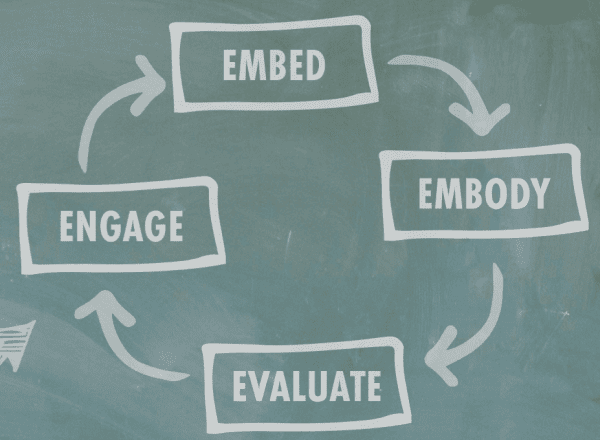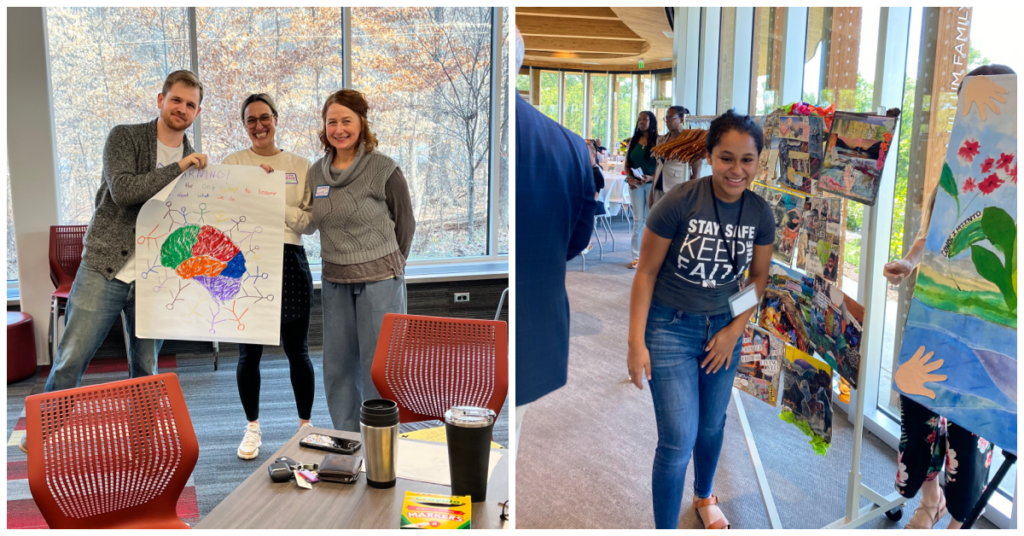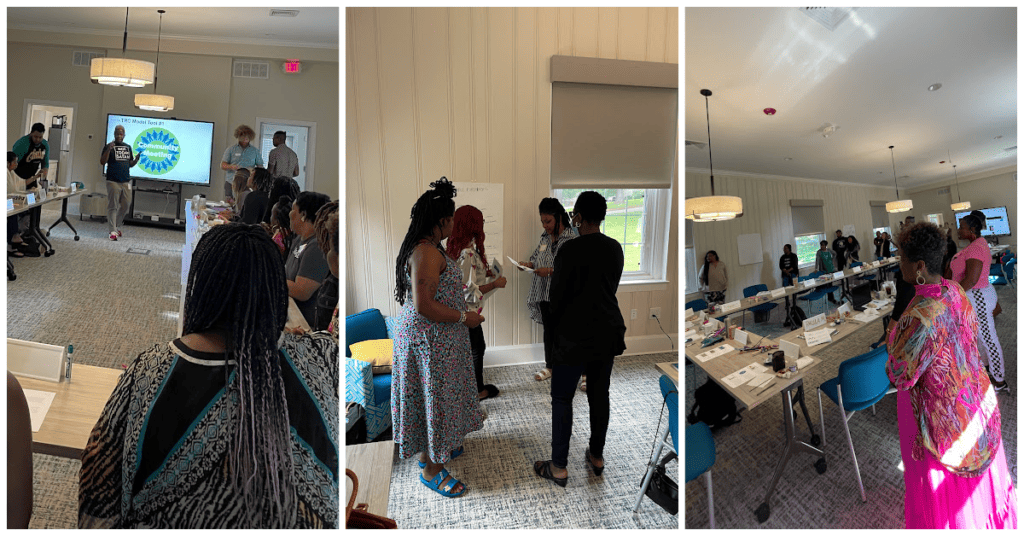Communities worldwide have been contending with the word “resilience” for years. What does resilience mean in the context of community? Is the word overused? The questions go on. At Crossnore’s Center for Trauma Resilient Communities, we strive to support large and small communities through the ebb and flow of sustainable change through a resilience lens.
Four Phases of Community-Level Change
When establishing a resilience lens on community-level change, we consider four phases: Engaging, Embedding, Embodying, and Evaluating. Change isn’t completed overnight. It often looks cyclical rather than linear. One of our largest community-level partnerships to date is in Louisville, Kentucky. The 5-year Louisville Trauma-Resilient Community Project is one that we’ve learned and adapted from. Ultimately, we found a rhythm of adjusting how we approach large initiatives to fit the needs of a community-engaged approach. We’ve taken the blueprint from Louisville to help inform two other large community-level projects. One in Western North Carolina and the other in Winston-Salem, North Carolina. We stand by the viewpoint that to sustain change at an individual level, trauma-resilient systems have to be in place to support it.

Engage
So, where do we start? When engaging communities, we begin by identifying champions who are already actively committed to strengthening their communities. These individuals can be formal and informal leaders within a community. But it’s essential to have both. Leaders include community members, activists, political leaders, educators, individuals with lived experiences, and organizational leaders, to name a few. Part of engaging a community is the discovery and co-creation of a shared vision of what it means to be trauma-resilient. The engagement phase is essential for change because sustainable community-level change falls short without buy-in from various stakeholders.
One important thing to note is the need for more connection, play, and, ultimately, building a sense of belonging. These things are often left off the table before having necessary conversations for community change. Meaningful change requires persistent and committed people. The reason we were so successful in Louisville, Kentucky, is the relationships we made and the fun we had!

Embed
When embedding a trauma-resilient framework into a community, the groundwork has already been laid for sustainability. Then, it’s time to practice. This is really when science and theory meet the road. As community champions transition from the engagement phase, they learn how to find practical ways to incorporate trauma-resilient practices into their day-to-day. Trauma-resilient practices aren’t something that kept on a shelf and only brought out for complex situations. They are living and breathing in small and large ways.
Our experience in Louisville informs how we approach future community initiatives. For example, community initiatives need to have diverse sets of perspectives and opinions. These help inform the change that is most needed by a community. In Winston-Salem, North Carolina, we are in the planning stages of the community initiative. Learning from the Louisville project and smaller systemic initiatives within Winston-Salem, not only is it essential to have large systems of care within a community but to support and reinforce the need to have grassroots community organizations at the forefront of our work. In order for trauma resilience to be embedded into a community, you need many voices at the table to inform and drive the work.

Embody
When embodying trauma-resilience, these practices start to become second nature and are used regularly with an automatic response rather than having to later reassess. When a community embodies trauma resilience, there is a shared culture around knowledge, understanding, practices, and language. Embodying resilience at a community level takes time. But little by little, the change starts to permeate the culture of a community. “This is done by embedding a set of researched building blocks that, once embedded, create community protective factors (i.e., community immunity)” (Vides, et. al).
When we say community immunity, we’re referring to resilient factors built into the community to help support when, inevitably, something causes inequity, adversity, stress, and trauma. There are times when a community doesn’t find its way to embodying trauma-resilience. And that’s because of the stress and trauma that come with large-scale culture change. Often, burnout, turnover, systemic violence, etc., contribute to a never-ending reboot of a system’s engagement stage. The key to embodying trauma resilience is finding transformational leaders. Leaders who find ways to support a shared commitment to the well-being of the community as a whole. What does it mean to fully embody trauma resilience? It means a community collectively lives the knowledge, understanding, and practice to help mitigate future stress and trauma.
Evaluate
Evaluating means a lot of things to a lot of people. It’s essential whether you’re talking about formal evaluation strategies or having accountability measures built into an initiative. Ongoing evaluation and analysis of effectiveness and change are crucial to the sustainability of communities that strive to be trauma-resilient. Assessing the efficacy is only a small part of evaluation. When creating resilient communities, accountability and responsibility are at the heart of sustaining a culture change.
What do we mean by accountability and responsibility? It’s follow-through. It’s taking what you’ve learned from evaluating change and using it to improve the function, recruitment, and future planning. Evaluating without follow through creates deeper systemic failures and highlights the ongoing inequities that come along the way.
Evaluating an initiative gives the opportunity for individuals to see where we’ve been, where we are, and where we’re going. A considerable part of evaluating is being ethically and socially accountable to the communities we serve. Evaluation is the checks and balances needed to not only keep accountable but to celebrate the collective contributions and accomplishments of the community. An honest look at the work leaves room for social learning and responsibility to continue to commit to the growth a community so desperately works towards. Evaluating helps us highlight our strengths, see where improvements are needed, and identify gaps and areas for growth to adjust, pivot, and shift accordingly to keep growing.
Resilience in Your Community
Are resilient practices present in your community? What are you doing to contribute to community resilience as a means of social responsibility and community immunity? Building community resilience allows us to create an ecosystem that mitigates the impact of adversity, inequity, stress, and trauma. A resilient ecosystem provides a greater sense of belonging that empowers individuals to use a resilience lens when addressing complex issues. As communities continue to navigate building resilience, Crossnore’s Center for Trauma Resilient Communities strives to partner, adapt, and support them along the way.



